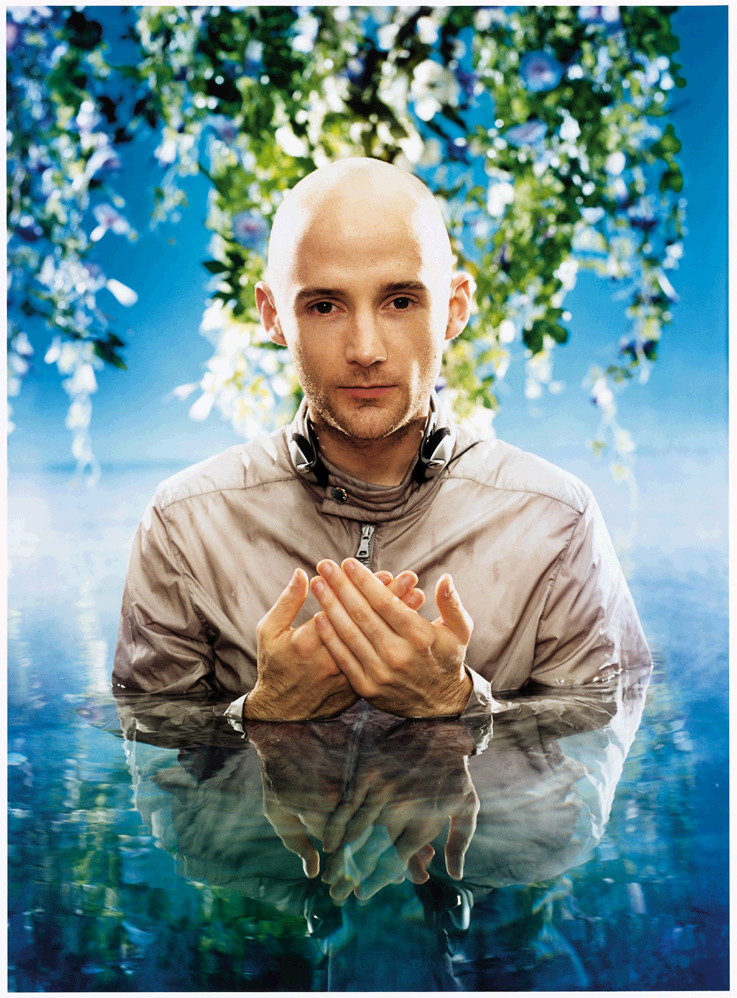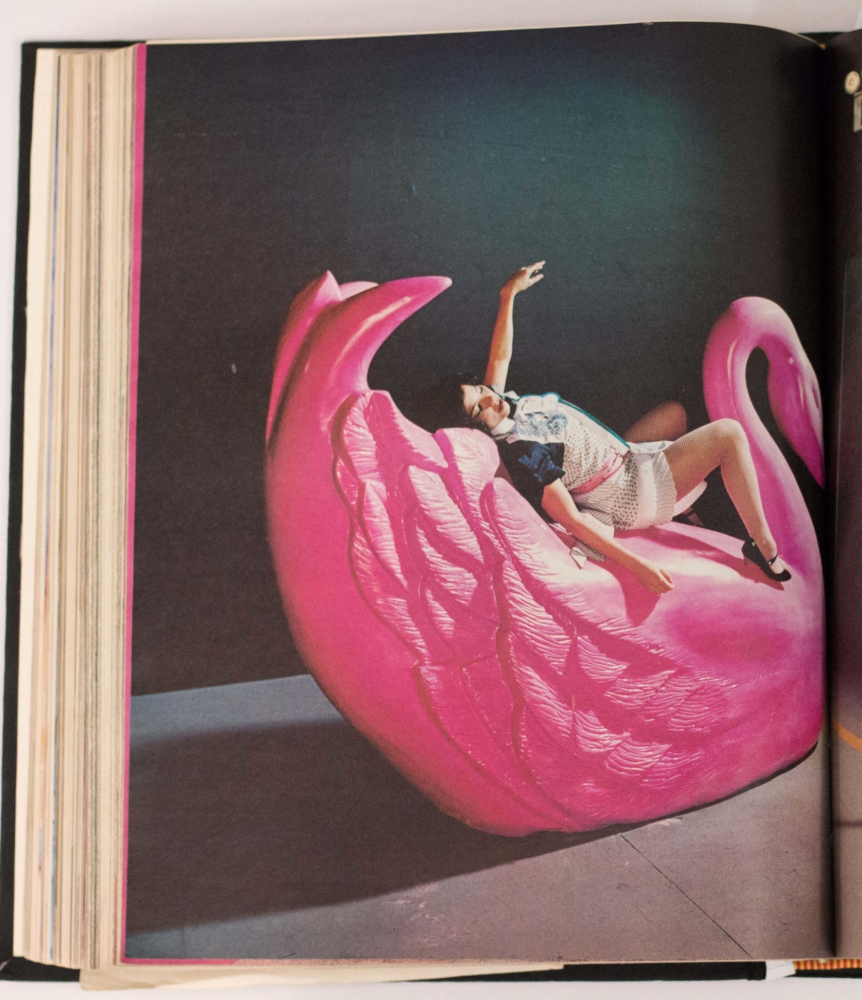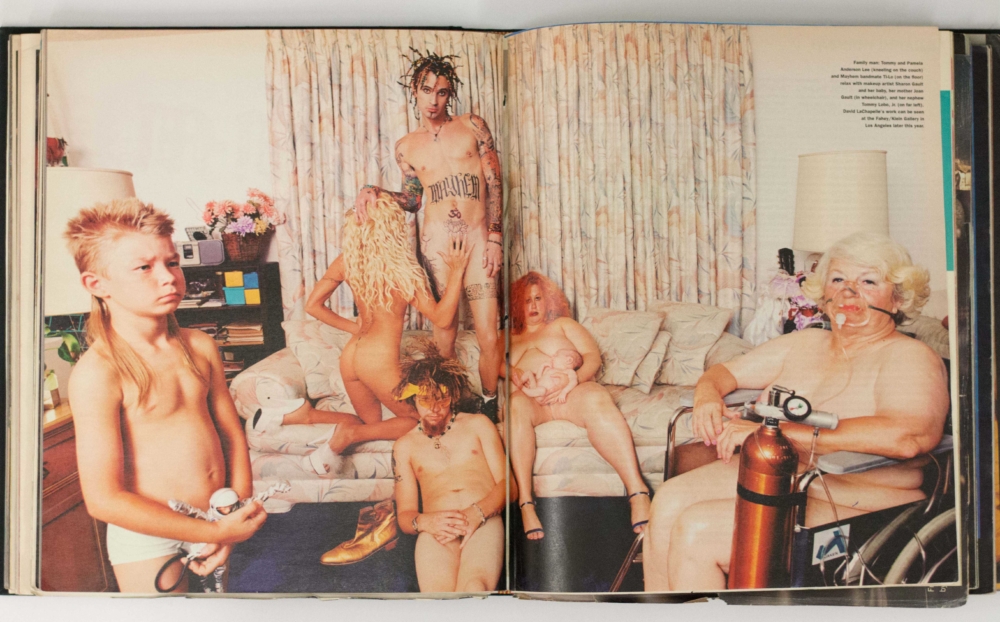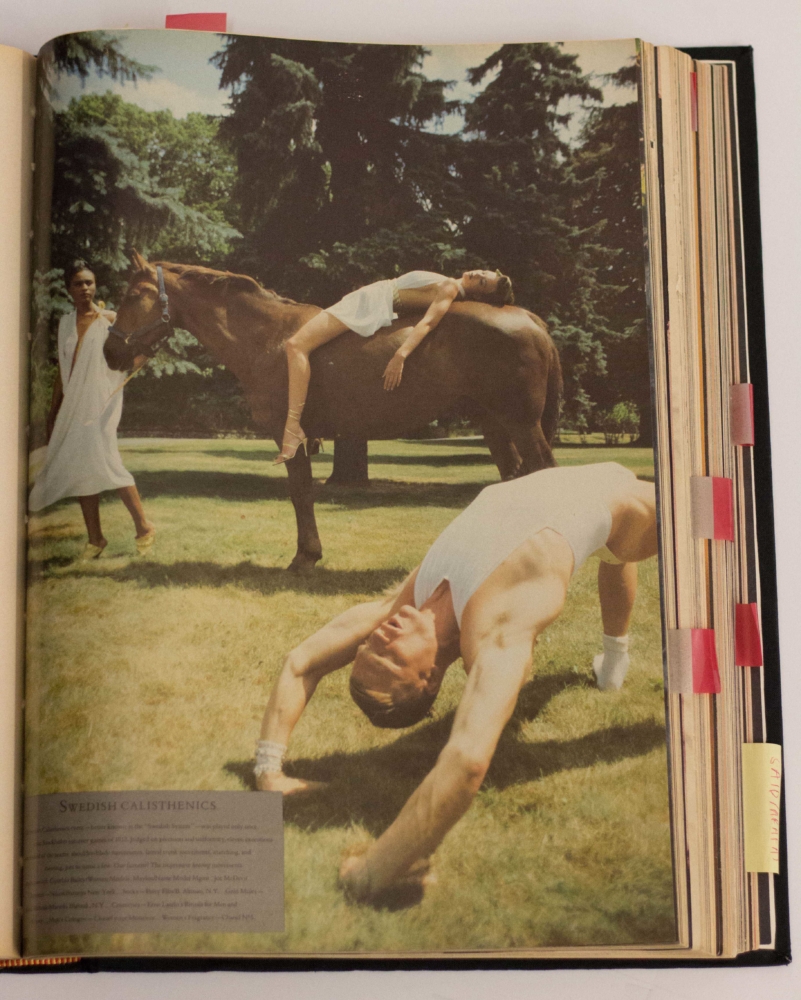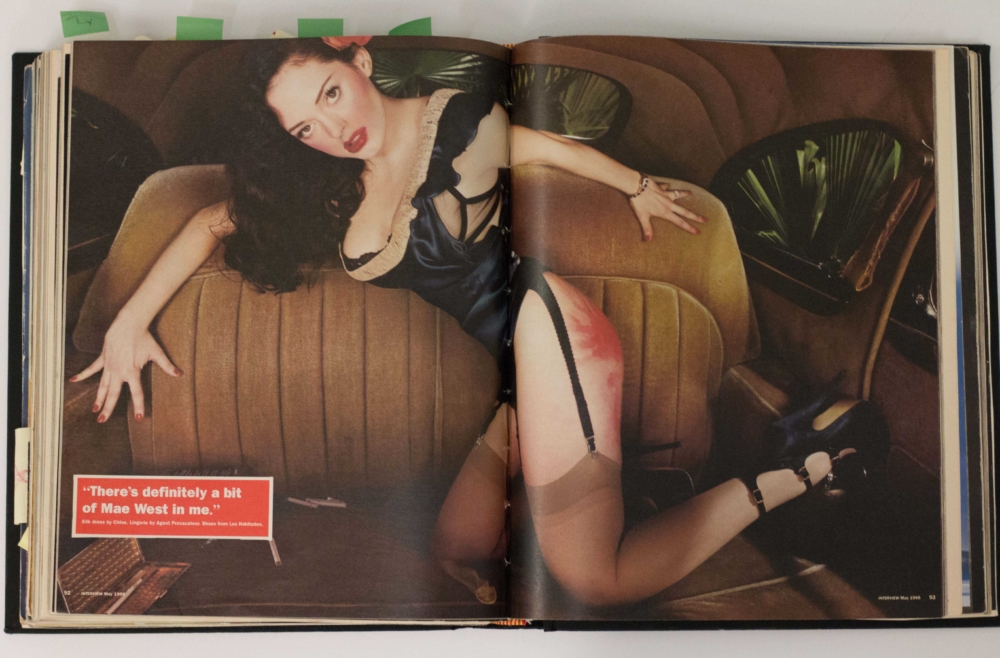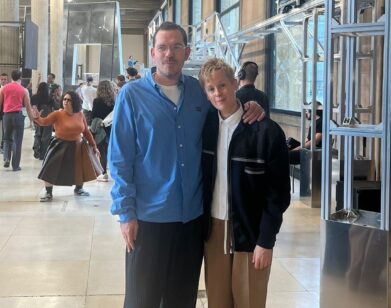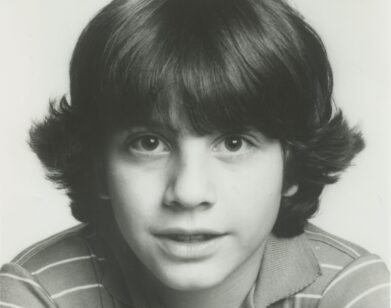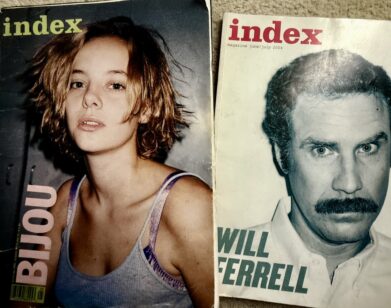David LaChapelle gives us a tour of his Interview legacy
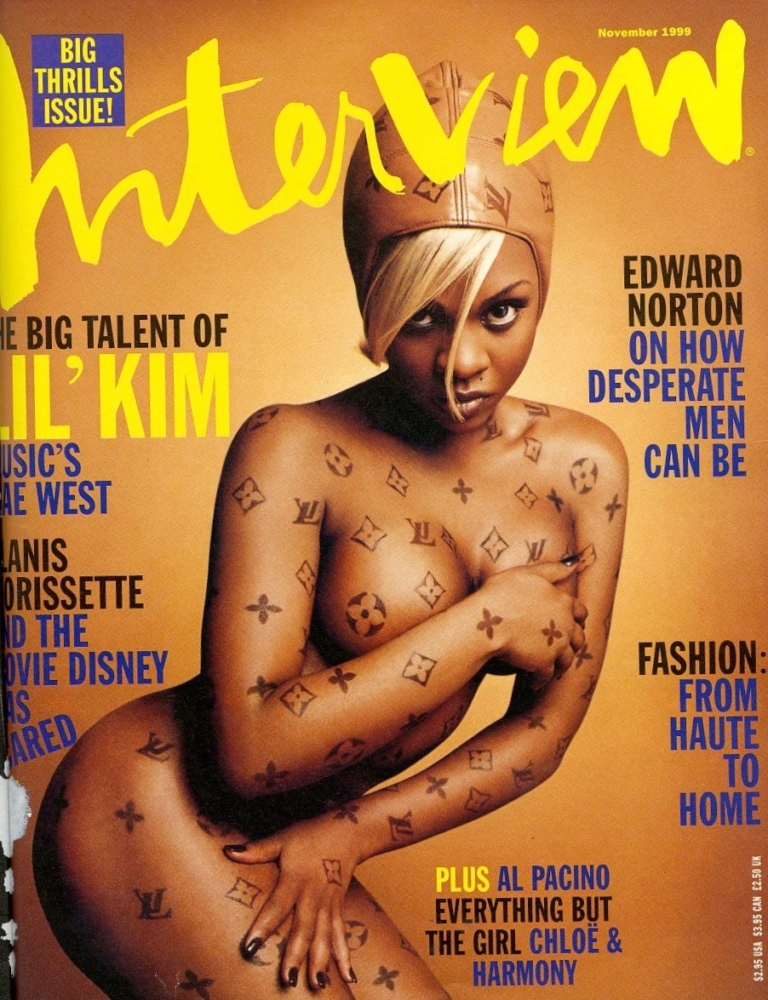
David LaChapelle dropped out of high school at age 15, becoming a New York teen transplant and hobnobbing with the club set as a busboy at Ian Schrager’s Studio 54 in 1978. It was there that Andy Warhol discovered him, and LaChapelle began his first magazine work for Interview. “Andy was always like, ‘Do whatever you want, just make everyone look good.’”
His creations of surrealist pop iconography became synonymous with Ingrid Sischy’s reign as editor. He shot Björk reclining on a giant pink swan, Elton John in a pair of goofy glasses, and Rose McGowan as a neo-Madonna, the picture of immaculate misconception.
Through his tenure at Interview as a contributing photographer, and in his shoots for other magazines and music videos, LaChapelle has defined a high-gloss, colorfully elaborate approach to photography that has been blatantly copied and idolized by photographers who followed. A naked Tupac covered strategically with a piece of silk fabric. Gaga covered strategically in pink bubbles. Hillary Clinton crying maniacally. Whomever the subject, all have emerged the other side of his lens ameliorated, saturated versions of themselves. Then, about 10 years ago, LaChapelle disappeared from the industry altogether, telling the Guardian, “I never wanted to shoot another pop star as long as I lived.”
He returned to nature, becoming a farmer in rural Maui, building a church (which was the setting of the Sergei Polunin starring video for Hozier’s hit “Take Me To Church”). During the past five years—between the odd job and Kardashian Khristmas Kard—the photographer has been compiling decades of work into two career-surveying books for Taschen. One takes a slice into pop culture’s many-ringed log, an encyclopedic flip through the increasingly celebrity-obsessed past few decades. The other is a look at immortality and the metaphysical, or “ideas that I’ve been totally obsessed with since I was a kid.”
As he reassesses his legacy—“These books are my gifts to the world,” he says—LaChapelle casts an eye over some of his best shoots that have appeared in the pages of Interview.
LIL KIM IN INTERVIEW, NOVEMBER 1999 (ABOVE)
DAVID LACHAPELLE: That photo was on the wall at the Tony Shafazi gallery and Ingrid [Sischy] came in and said, “Has anyone seen this?” I said, “No, I just shot it.” And she said, “Take it down!” So I put it in the back room [of the gallery] and she said we were going to use it as a cover for Interview. So I had to call Kim and I said, “That photo we did with that Louis Vuitton thing, can Interview use it as a cover?” Now, at this time, people who weren’t deep into hip-hop heard about Lil Kim and about Foxy Brown, but didn’t know the difference between her and Foxy. Kim was like, “But David, I promised the magazine that that picture is going to be on the cover of Chocolate Singles,” which was this free magazine that they put out in the subway. I was like, “No no no, this has to be on Interview because Interview is a really important magazine. I will give [Chocolate Singles] something else and we’re going to put this on Interview which will be really good—you have to trust me!” After she did this cover, the fashion people all went nuts for her, she became a superstar and shot off. We applied the [Vuitton] logo with an airbrush and stencil. It wasn’t for a season or two later that [designers] began to come back with logos!
MOBY IN INTERVIEW, JULY 2000
LACHAPELLE: I remember talking Ingrid into shooting Moby for [the July 2000 issue] because he’s really not that good looking. I was like, “I’ll make him really pretty I promise!” She was like, “He’s not pretty enough for the cover.” I had done that video where he was the really old person and it blew up and it was a huge smash record, “Play,” and the video won Video of the Year. It was my second video and he was done up in prosthetic makeup like an elderly person and it’s so convincing that it got stuck in people’s head, they thought he was really elderly.
BJÖRK IN INTERVIEW, SEPTEMBER 2001
LACHAPELLE: When we met, we hit it off really well and it was a really fun day. I saw her a week before the shoot at this art thing in L.A. and I said to her, “We’re getting these swan dresses.” She looked at me really funny. Then I realized, right after the shoot was the Academy Awards where she wore the swan dress by [Marjan Pejoski] and that must’ve already been planned out when I brought it up because she looked at me really funny. We asked the same designer for the dress independently! It’s really interesting when these super intuitive, synchronistic things happen. I love that in photography. It’s the best when you work with people and it’s a visual extension of their music. Björk is so visual anyway, it’s really an exciting collaboration when you photograph someone and it works out so great.
TOMMY LEE IN INTERVIEW, MARCH 2000
LACHAPELLE: That’s at Sharon’s house, that’s Sharon Gault (middle) and her daughter Peanut and that was in their house. That’s Sharon’s mom (right) who since passed away. That’s Tommy, her nephew (left). Sharon did makeup for Miley Cyrus for the cover of the book. She introduced me to Miley and was the one that introduced me to Gaga. I’m always photographing my friends.
THE OLYMPICS IN INTERVIEW, SEPTEMBER 1988
LACHAPELLE: Oh my god, I forgot about this! [laughs] I was good at the group shots like this. I definitely knew that I could direct and compose a group shot, which are not easy to do. I had a loud mouth; it was like a circus always, so the more I screamed and acted crazy the more relaxed and disarmed people were in front of the camera.
ROSE McGOWAN IN INTERVIEW, MAY 1999
LACHAPELLE: Patti Wilson, who was the stylist, was coming up with these headpieces. Patti was a Catholic nun up in Harlem, nobody knows this, and then she became married to fashion and had to leave the convent. So we both shared that love of the sacred. I don’t think this is profane, I never tried to be profane and I never tried purposely to shock people—I never found nudity shocking and we always had fun with it. To be edgy we would always use humor, it was more fun for us. You couldn’t do that now, could you? [laughs] With this climate of the last couple of months. There’s a condom on that car seat. Everything was so planned out for this shoot, but I wouldn’t tell the publicist what I was doing. That’s the thing, if I had told them, “There’s going to be a condom on the seat and Rose’s ass is going to be red from spanking,” the publicist would lose their mind and days before the shoot they would cancel. So I was just like, “Rose is going to look great! We have Patti Wilson getting these beautiful things from Paris!” Rose was totally down for it.
If I told them my ideas, I would never have gotten the pictures that I have. So I would just be super vague and be like, “Yeah, [the concept is] really cool. What would they want to eat again for lunch? What was the champagne she wanted?” I would just change the subject and then they would come to the set and get into it or whatever. There are some people who are really controlling, like Madonna—there would be drawings and she would direct certain ideas. One that I was annoyed about was I wanted to use all of these lookalikes, like drag queens. I wanted to use lookalikes of her and she didn’t like that idea. But it came up on the MTV awards years later.
LOST AND FOUND (PART I) AND GOOD NEWS (PART II) (TASCHEN) ARE AVAILABLE NOW.

